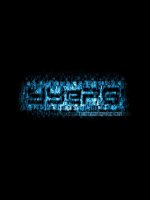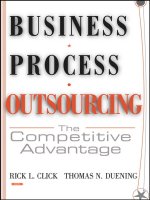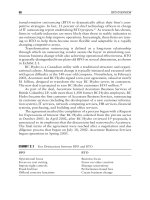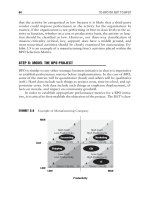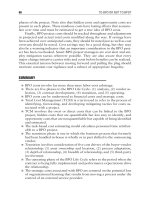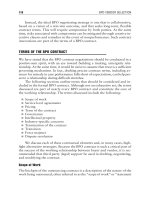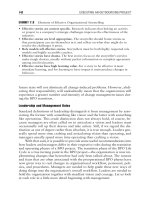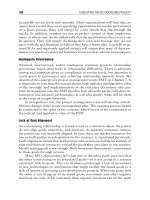OB11 chapter 05 percuption and individual decision making
Bạn đang xem bản rút gọn của tài liệu. Xem và tải ngay bản đầy đủ của tài liệu tại đây (439.92 KB, 31 trang )
eleventh
organizational
ior
behav
stephen p. robbins
© 2005 Prentice Hall Inc.
All rights reserved.
editi
on
Chapter 5
Perception and
Individual Decision
Making
ORGANIZATIONAL BEHAVIOR
S T E P H E N P. R O B B I N S
E L E V E N T H
© 2005 Prentice Hall Inc.
All rights reserved.
E D I T I O N
WWW . PRE N HALL. C OM / ROB BI N S
PowerPoint Presentation
by Charlie Cook
OBJECTIVES
LEARNING
After studying this chapter,
you should be able to:
1. Explain how two people can see the same
thing and interpret it differently.
2. List three determinants of attribution.
3. Describe how shortcuts can assist in or distort
our judgment of others.
4. Explain how perception affects the decisionmaking process.
5. Outline the six steps in the rational decisionmaking model.
© 2005 Prentice Hall Inc.
All rights reserved.
5–3
O B J E C T I V E S (cont’d)
LEARNING
After studying this chapter,
you should be able to:
6. Describe the actions of a boundedly rational
decision maker.
7. Identify the conditions in which individuals are
most likely to use intuition in decision making.
8. Describe four styles of decision making.
9. Define heuristics and explain how they bias
decisions.
10. Contrast the three ethical decision criteria.
© 2005 Prentice Hall Inc.
All rights reserved.
5–4
What
What Is
Is Perception,
Perception, and
and Why
Why Is
Is ItIt Important?
Important?
Perception
A process by which
individuals organize and
interpret their sensory
impressions in order to
give meaning to their
environment.
© 2005 Prentice Hall Inc.
All rights reserved.
••People’s
People’s behavior
behavior isis
based
based on
on their
their
perception
perception of
of what
what
reality
reality is,
is, not
not on
on
reality
reality itself.
itself.
••The
The world
world as
as itit isis
perceived
perceived isis the
the world
world
that
that isis behaviorally
behaviorally
important.
important.
5–5
Factors
FactorsThat
That
Influence
Influence
Perception
Perception
©
E X H2005
I B I T 5–1Prentice Hall Inc.
E X H I B I T 5–1
All rights reserved.
5–6
Person
Person Perception:
Perception: Making
Making Judgments
Judgments About
About
Others
Others
Attribution Theory
When individuals observe
behavior, they attempt to
determine whether it is
internally or externally
caused.
Distinctiveness:
Distinctiveness:shows
showsdifferent
differentbehaviors
behaviorsinindifferent
differentsituations.
situations.
Consensus:
Consensus:response
responseisisthe
thesame
sameas
asothers
otherstotosame
samesituation.
situation.
Consistency:
Consistency:responds
respondsininthe
thesame
sameway
wayover
overtime.
time.
© 2005 Prentice Hall Inc.
All rights reserved.
5–7
Attribution
Theory
Attribution
Theory
©
2005 Prentice
Hall Inc.
All rights reserved.
E X H I B I T 5–2
E X H I B I T 5–2
5–8
Errors
Errors and
and Biases
Biases in
in Attributions
Attributions
Fundamental Attribution Error
The tendency to underestimate
the influence of external factors
and overestimate the influence
of internal factors when making
judgments about the behavior
of others.
© 2005 Prentice Hall Inc.
All rights reserved.
5–9
Errors
Errors and
and Biases
Biases in
in Attributions
Attributions (cont’d)
(cont’d)
Self-Serving Bias
The tendency for individuals
to attribute their own
successes to internal factors
while putting the blame for
failures on external factors.
© 2005 Prentice Hall Inc.
All rights reserved.
5–10
Frequently
Frequently Used
Used Shortcuts
Shortcuts in
in Judging
Judging Others
Others
Selective Perception
People selectively interpret what they see on the
basis of their interests, background, experience,
and attitudes.
© 2005 Prentice Hall Inc.
All rights reserved.
5–11
Frequently
Frequently Used
Used Shortcuts
Shortcuts in
in Judging
Judging Others
Others
Halo Effect
Drawing a general impression
about an individual on the
basis of a single characteristic
Contrast Effects
Evaluation of a person’s characteristics that
are affected by comparisons with other
people recently encountered who rank higher
or lower on the same characteristics.
© 2005 Prentice Hall Inc.
All rights reserved.
5–12
Frequently
Frequently Used
Used Shortcuts
Shortcuts in
in Judging
Judging Others
Others
Projection
Stereotyping
Attributing one’s own
characteristics to other
people.
Judging someone on the
basis of one’s perception of
the group to which that
person belongs.
© 2005 Prentice Hall Inc.
All rights reserved.
5–13
Specific
Specific Applications
Applications in
in Organizations
Organizations
Employment Interview
– Perceptual biases of raters affect the accuracy of
interviewers’ judgments of applicants.
Performance Expectations
– Self-fulfilling prophecy (pygmalion effect): The lower or
higher performance of employees reflects preconceived
leader expectations about employee capabilities.
Ethnic Profiling
– A form of stereotyping in which a group of individuals
is singled out—typically on the basis of race or
ethnicity—for intensive inquiry, scrutinizing, or
investigation.
© 2005 Prentice Hall Inc.
All rights reserved.
5–14
Specific
Specific Applications
Applications in
in Organizations
Organizations (cont’d)
(cont’d)
Performance Evaluations
– Appraisals are often the subjective (judgmental)
perceptions of appraisers of another employee’s job
performance.
Employee Effort
– Assessment of individual effort is a subjective
judgment subject to perceptual distortion and bias.
© 2005 Prentice Hall Inc.
All rights reserved.
5–15
The
The Link
Link Between
Between Perceptions
Perceptions and
and Individual
Individual
Decision
Decision Making
Making
Problem
A perceived discrepancy
between the current state of
affairs and a desired state.
Decisions
Choices made from among
alternatives developed from
data perceived as relevant.
© 2005 Prentice Hall Inc.
All rights reserved.
Perception
Perception
of
ofthe
the
decision
decision
maker
maker
Outcomes
5–16
Assumptions
Assumptions of
of the
the Rational
Rational Decision-Making
Decision-Making
Model
Model
Rational DecisionMaking Model
Describes how
individuals should
behave in order to
maximize some
outcome.
© 2005 Prentice Hall Inc.
All rights reserved.
Model
ModelAssumptions
Assumptions
•• Problem
Problemclarity
clarity
••
••
Known
Knownoptions
options
Clear
Clearpreferences
preferences
•• Constant
Constant
preferences
preferences
•• No
Notime
timeor
orcost
cost
constraints
constraints
•• Maximum
Maximumpayoff
payoff
5–17
Steps
Steps in
in the
the Rational
Rational Decision-Making
Decision-Making Model
Model
1. Define the problem.
2. Identify the decision criteria.
3. Allocate weights to the criteria.
4. Develop the alternatives.
5. Evaluate the alternatives.
6. Select the best alternative.
© 2005 Prentice Hall Inc.
All rights reserved.
E X H I B I T 5–3
E X H I B I T 5–3
5–18
The
The Three
Three Components
Components of
of Creativity
Creativity
Creativity
The ability to produce
novel and useful ideas.
Three-Component
Model of Creativity
Proposition that individual
creativity requires expertise,
creative-thinking skills, and
intrinsic task motivation.
© 2005 Prentice Hall Inc.
All rights reserved.
Source: T.M. Amabile, “Motivating Creativity in Organizations,” California Management Review, Fall 1997, p. 43.
E X H I B I T 5–4
E X H I B I T 5–4
5–19
How
How Are
Are Decisions
Decisions Actually
Actually Made
Made in
in
Organizations
Organizations
Bounded Rationality
Individuals make decisions by constructing
simplified models that extract the essential
features from problems without capturing
all their complexity.
© 2005 Prentice Hall Inc.
All rights reserved.
5–20
How
How Are
Are Decisions
Decisions Actually
Actually Made
Made in
in
Organizations
Organizations (cont’d)
(cont’d)
How/Why problems are identified
– Visibility over importance of problem
• Attention-catching, high profile problems
• Desire to “solve problems”
– Self-interest (if problem concerns decision maker)
Alternative Development
– Satisficing: seeking the first alternative that solves
problem.
– Engaging in incremental rather than unique problem
solving through successive limited comparison of
alternatives to the current alternative in effect.
© 2005 Prentice Hall Inc.
All rights reserved.
5–21
Common
Common Biases
Biases and
and Errors
Errors
Overconfidence Bias
– Believing too much in our own decision competencies.
Anchoring Bias
– Fixating on early, first received information.
Confirmation Bias
– Using only the facts that support our decision.
Availability Bias
– Using information that is most readily at hand.
Representative Bias
– Assessing the likelihood of an occurrence by trying to
match it with a preexisting category.
© 2005 Prentice Hall Inc.
All rights reserved.
5–22
Common
Common Biases
Biases and
and Errors
Errors
Escalation of Commitment
– Increasing commitment to a previous decision in spite
of negative information.
Randomness Error
– Trying to create meaning out of random events by
falling prey to a false sense of control or superstitions.
Hindsight Bias
– Falsely believing to have accurately predicted the
outcome of an event, after that outcome is actually
known.
© 2005 Prentice Hall Inc.
All rights reserved.
5–23
Intuition
Intuition
Intuitive Decision Making
– An unconscious process created out of distilled
experience.
Conditions Favoring Intuitive Decision Making
–
–
–
–
–
–
–
–
A high level of uncertainty exists
There is little precedent to draw on
Variables are less scientifically predictable
“Facts” are limited
Facts don’t clearly point the way
Analytical data are of little use
Several plausible alternative solutions exist
Time is limited and pressing for the right decision
© 2005 Prentice Hall Inc.
All rights reserved.
5–24
Decision-Style
Decision-Style Model
Model
© 2005 Prentice Hall Inc.
All rights reserved.
Source: A.J. Rowe and J.D. Boulgarides, Managerial Decision
Making, (Upper Saddle River, NJ: Prentice Hall, 1992), p. 29.
E X H I B I T 5–5
E X H I B I T 5–5
5–25
